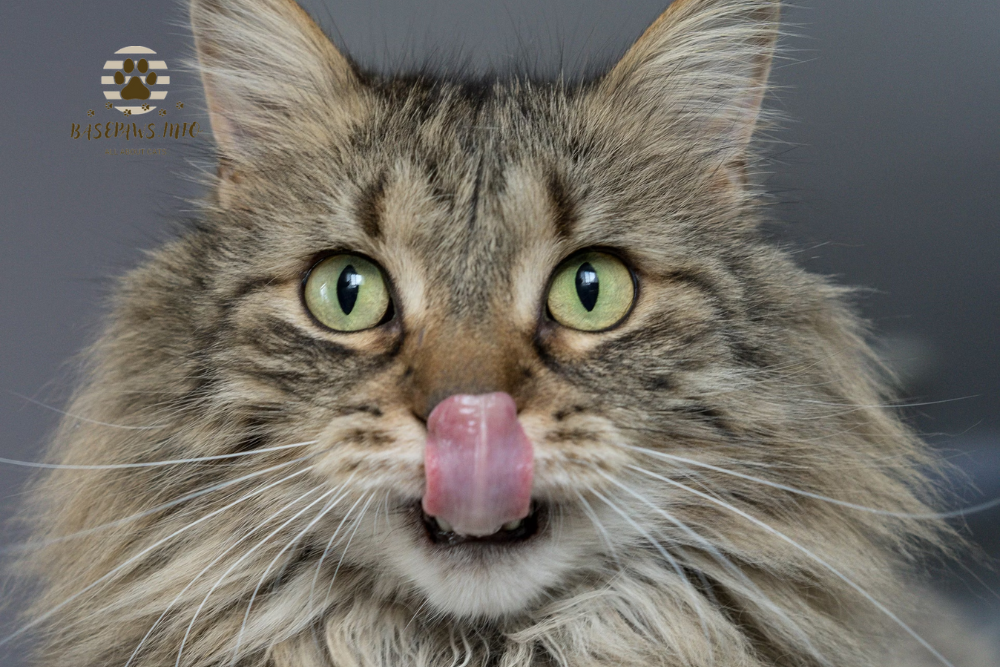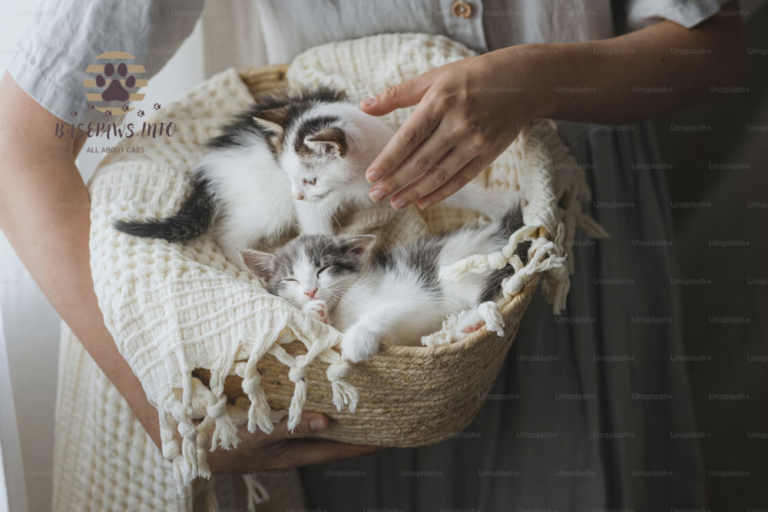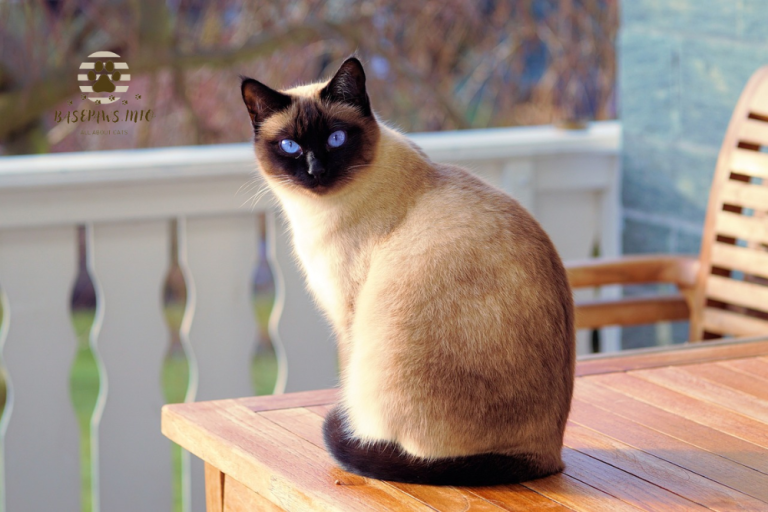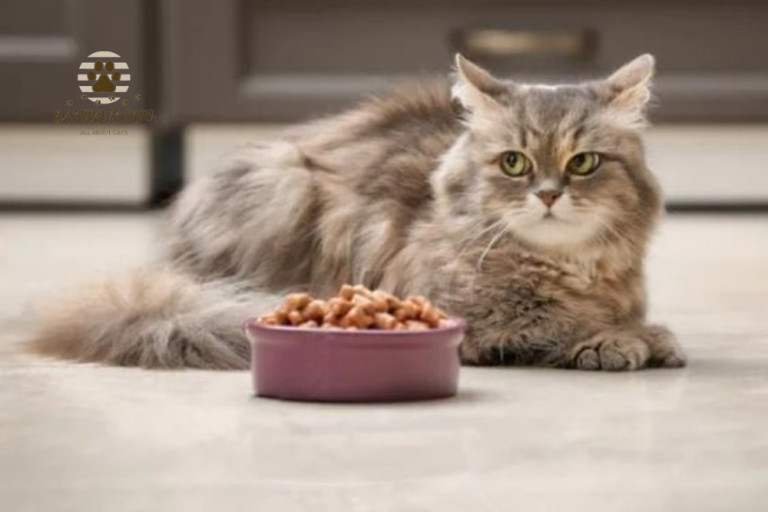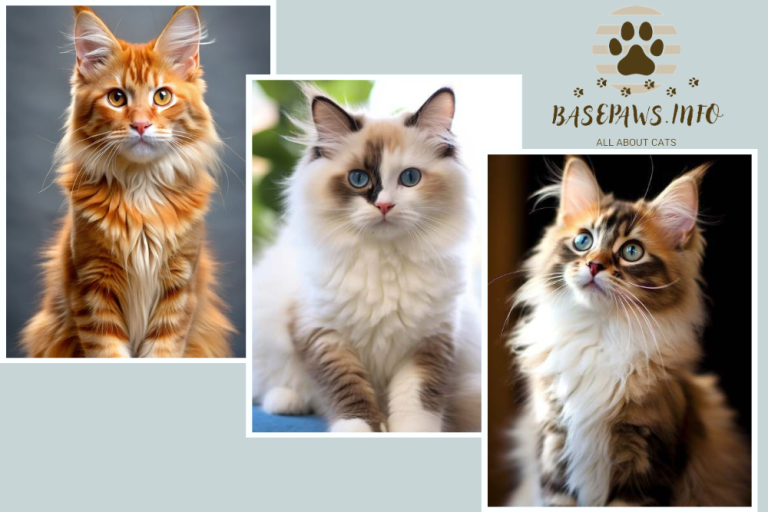Understanding Cat Matted Fur: A Comprehensive Guide
Every cat owner has faced the frustration of dealing with matted fur. It often starts as a small tangle but can quickly turn into a larger problem, causing discomfort for your furry friend. Matted fur can lead to skin irritation, infections, and even pain if left untreated. Fortunately, understanding how to prevent and care for cat matted fur can significantly improve your cat’s well-being.
Grooming your cat isn’t just about keeping them looking neat; it’s a vital part of their overall health. Regular grooming helps remove loose fur, dirt, and debris, while also allowing you to monitor your cat’s skin condition. With the right tools and techniques, you can transform grooming from a dreaded task into a pleasant bonding experience for both you and your cat.
Overview of the Importance of Grooming
Matted fur occurs when loose hairs get tangled and form clumps. Cats, especially those with long or dense coats, can quickly develop mats if they aren’t groomed regularly. These mats can trap dirt, moisture, and even pests, leading to skin irritations and other health issues.
Addressing matted fur promptly is crucial for your cat’s comfort and health. If left untreated, mats can become painful and limit your cat’s movement. Furthermore, mats can lead to skin infections, hot spots, and further matting, creating a vicious cycle. Taking action early helps keep your cat happy and healthy.
Understanding Cat Fur and Matting
Matted fur is a common issue for many cat owners, particularly those with long-haired or thick-coated breeds. These mats, which are clumps or tangles of fur, can range from small knots to large, dense clumps that may become painful over time. Addressing matting is essential for a cat’s comfort and health. Let’s dive into the causes, consequences, and how to manage and prevent matting in your cat’s coat.
What Are Mats?
Mats are dense tangles that form when individual strands of fur become intertwined. This occurs when loose or shedding hair doesn’t fall away and instead gets trapped in the coat, eventually becoming tangled with surrounding hairs. As time goes on, these tangles grow tighter and harder to remove, creating mats. Mats can appear as small knots that you might find while petting your cat or as larger clumps that form in areas your cat finds difficult to groom, such as the belly, underarms, or behind the ears.
Common Reasons for Cat Matted Fur
There are several factors that contribute to matting, some of which are preventable with regular grooming habits.
- Lack of Regular Brushing: Cats shed hair continuously, and if loose hairs aren’t brushed out, they can accumulate and cause tangling. Regular brushing helps prevent mats, particularly in cats with long or dense fur.
- Humidity and Moisture: Damp environments make fur stickier and more likely to clump. Cats living in humid regions or frequently exposed to moisture (from rain or water bowls) are more susceptible to mats forming.
- Skin Conditions: Conditions like allergies, fungal infections, or dermatitis can cause itching, which leads cats to scratch or bite their fur more often. This frequent scratching can disrupt the coat, increasing the likelihood of mats forming.
- Over-Grooming: Cats may over-groom when they are anxious, stressed, or even bored. This can result in saliva-soaked fur, which is more likely to mat when not dried properly. Over-grooming can also pull out clumps of hair, leading to patchy areas that tangle easily.
- Obesity: Overweight cats often struggle to reach all areas of their bodies, especially around their lower back and tail area. This lack of flexibility can result in neglected areas where mats are more likely to develop.
- Age-Related Issues: As cats age, they may become less flexible, making it harder to groom hard-to-reach areas. Arthritis and other age-related conditions can further limit a cat’s ability to groom, allowing mats to form unchecked.
Health Implications of Matted Fur
Leaving matted fur untreated can lead to various health issues for your cat. Mats not only cause discomfort but can have severe consequences on a cat’s skin and overall well-being:
- Skin Infections: Mats trap dirt, bacteria, and moisture close to the skin, creating the perfect environment for infections to develop. In severe cases, matted fur can lead to fungal or bacterial infections, which may require veterinary treatment.
- Pain and Discomfort: As mats tighten, they pull at the skin, leading to irritation and discomfort. In some cases, the skin underneath mats can become inflamed or even bleed. Cats with tight mats often show signs of distress and may become less active or social.
- Hot Spots: Hot spots are localized areas of skin inflammation that arise from constant irritation, often due to mats rubbing against the skin. These spots can become moist, red, and itchy, prompting cats to scratch and bite, which only worsens the irritation.
- Decreased Mobility: Severe matting, especially around the limbs and belly, can restrict a cat’s range of motion. Mats in these areas limit a cat’s ability to stretch, jump, and walk comfortably, leading to less physical activity and increased stiffness. Over time, restricted mobility can also contribute to joint problems.
Identifying Areas Prone to Matting
Certain areas of a cat’s body are more prone to matting than others, typically where they experience the most friction or have difficulty reaching:
- Belly: Since cats lie on their belly and sometimes drag it along surfaces, it’s more likely to mat.
- Under the Arms and Legs: Movement in these areas often causes tangling, especially if the fur is longer.
- Around the Collar: If your cat wears a collar, fur around it can mat from constant contact and friction.
- Behind the Ears: Cats have a tough time grooming behind their ears, making it a common spot for mats to develop.
- Tail and Rear Area: Long-haired cats, in particular, tend to have mats around their tail and rear area due to their inability to properly reach this spot for grooming.
Preventing and Managing Matted Fur
Regular grooming and vigilance can prevent mats from forming. Here are some strategies to manage and prevent matting:
- Establish a Grooming Routine: Brushing your cat at least once or twice a week removes loose fur and prevents mats from forming. For long-haired cats, daily brushing is ideal. A consistent grooming routine also helps you check for any unusual skin issues or areas of concern.
- Use the Right Tools: Different grooming tools suit different types of fur. Slicker brushes, wide-toothed combs, and de-matting tools are great for preventing and tackling mats. Detangling sprays can also help loosen up fur before brushing.
- Spot-Clean Moisture-Prone Areas: For cats that often get damp fur, gently drying and combing these areas can prevent clumping. Pay special attention to their neck (if they wear a collar) and around the rear after they use the litter box.
- Trim Fur in Problem Areas: For breeds that are especially prone to matting, keeping fur trimmed around high-friction areas like the belly, under the arms, and tail base can be beneficial. A professional groomer can provide a trim if you’re unsure how to do it yourself safely.
- Monitor Skin Health: Keeping your cat’s skin healthy can reduce scratching and over-grooming due to irritation. Regular flea treatments, allergy checks, and a vet-recommended diet can help prevent skin conditions that lead to matting.
- Consider Professional Grooming: Long-haired breeds or cats prone to matting may benefit from periodic visits to a professional groomer. Professional groomers have the tools and experience to manage severe mats safely and can provide helpful advice on maintaining a healthy coat.
When to Seek Veterinary Care for Matted Fur
In some cases, matted fur may indicate an underlying health problem, such as obesity, arthritis, or skin allergies. If your cat consistently struggles with mats despite regular grooming, it may be time for a check-up with the vet. Persistent mats in the same areas, or sudden changes in grooming habits, can also signal discomfort or pain that requires medical attention.
What Cat Breeds Are More Likely to Develop Mats?
Certain breeds are more prone to matting, particularly those with long or dense coats. These breeds include:
- Persians: Their long, luxurious fur is beautiful but requires regular grooming to prevent mats.
- Maine Coons: Known for their thick fur, they are also prone to tangling.
- Ragdolls: Their soft fur can easily develop mats without regular grooming.
How Do Cats Self-Groom?
Cats are known for their fastidious grooming habits, spending a significant portion of their day cleaning their fur. This routine not only helps them maintain hygiene but also reduces the chance of mats by loosening and removing dead hair, dirt, and oils. However, despite these efforts, matting can still occur, especially in long-haired breeds, or if underlying health issues arise.
The Grooming Process
The self-grooming process in cats is both methodical and instinctual. Cats typically start by licking their forelimbs and then use these dampened paws to clean their face and ears, reaching various areas in a specific pattern. This self-grooming helps regulate body temperature, removes excess oils, and redistributes natural oils across the coat, which contributes to a healthy shine. Unfortunately, self-grooming may not be entirely effective in removing dead fur from thicker undercoats, which can result in mats in certain areas.
Role of the Tongue in Grooming
A cat’s tongue is specially adapted for grooming, with tiny, hook-like structures called papillae. These backward-facing papillae act like a built-in comb, grabbing loose fur, dirt, and other particles as the cat licks its coat. While this grooming technique helps control fur and maintain coat cleanliness, it can also sometimes contribute to matting when loose fur accumulates in high-friction areas, such as the armpits, chest, or belly. Additionally, these hooks can inadvertently cause mats to tighten, as the tongue’s action pushes more fur into already tangled areas rather than loosening it.
Importance of Flexibility
Flexibility is another essential component of a cat’s grooming routine. Cats rely on their ability to reach nearly every part of their body, allowing them to groom areas that would otherwise be hard to access. Young and healthy cats can easily reach their backs, sides, and tails, preventing mat formation in these areas. However, with age, a cat’s flexibility naturally decreases, and conditions like arthritis can make it painful to reach certain spots. This limitation often leads to an accumulation of loose fur and oils in less accessible areas, increasing the likelihood of mats.
When Self-Grooming Isn’t Enough
While cats are generally capable of maintaining their coats, there are times when self-grooming alone isn’t sufficient to prevent matting. Certain factors—ranging from health issues to emotional stress—can interfere with a cat’s grooming ability, leading to mat formation. Understanding these factors can help owners identify when to step in with extra grooming support.
Factors Affecting Self-Grooming
Several factors can inhibit a cat’s ability to groom effectively, making them more prone to mats. Some common reasons include:
- Health Issues: Conditions like arthritis, dental pain, or obesity can reduce a cat’s mobility, making it difficult or painful to reach certain areas. For example, arthritis in older cats often limits their range of motion, which can result in mats forming in places like the lower back or flanks.
- Stress or Anxiety: Changes in a cat’s environment, such as a move, a new pet, or changes in household routines, can lead to increased stress. When anxious, some cats stop grooming altogether, while others may over-groom, especially in easy-to-reach areas, neglecting spots that are prone to matting.
- Age: Older cats naturally lose some flexibility, making it more challenging to reach certain areas. This age-related decline in grooming efficiency is common, particularly in long-haired breeds that require extra grooming care to prevent mats.
Health Issues and Grooming Ability
If your cat suddenly stops grooming or begins to develop mats more frequently, it may be a sign of an underlying health issue. Conditions such as arthritis, dental pain, or even kidney disease can affect a cat’s energy and physical capability, leading to poor grooming habits and an increase in matted fur. Regular veterinary check-ups are essential to monitor and address any health concerns that may be impacting your cat’s grooming routine. If underlying issues are identified, treatments such as pain management, weight control, or dietary adjustments can help restore a cat’s ability to groom effectively and reduce matting risks.
Prevention Strategies
Regular Brushing
One of the best ways to prevent mats is through regular brushing. Aim to brush your cat at least once a week, or more frequently for long-haired breeds. This practice removes loose hair and prevents tangling.
Establishing a Grooming Routine
Creating a consistent grooming schedule helps your cat become accustomed to the process. Choose a time when your cat is relaxed and content, making it easier for both of you.
Choosing the Right Grooming Tools
Selecting the right grooming tools is crucial for effective mat removal. Consider using:
- Wide-toothed combs: Great for detangling.
- Slicker brushes: Useful for removing loose fur and mats.
- Detangling sprays: Help loosen knots and make brushing easier.
Keeping Fur Trimmed
Regular trimming, especially around areas prone to matting, can help reduce the risk of mats forming. Focus on the belly, armpits, and behind the ears, which are common areas for matting.
Addressing Stress and Anxiety
If your cat seems anxious during grooming, create a calm environment. Use treats and praise to reinforce positive experiences during grooming.
Proper Diet for a Healthy Coat
A balanced diet contributes to a healthy coat. Ensure your cat’s food contains essential nutrients, including omega-3 and omega-6 fatty acids, which promote healthy skin and fur.
How to Remove Mats
Gather Your Tools
Before you start detangling, gather your grooming tools. You’ll need:
- A wide-toothed comb
- A slicker brush
- Detangling spray
- Clippers (if necessary)
Step-by-Step Guide on Brushing Out Mats
- Start Slowly: Work on small mats first.
- Apply Detangling Spray: Use a detangling spray to make the process easier.
- Gently Comb: Start at the edges of the mat and work your way in, being careful not to pull.
- Remove Mats Carefully: If the mat is too tight, consider using clippers.
Safe Detangling Tips
- Work Out the Mat: Gently tease apart mats with your fingers before using a comb.
- Stop if in Pain: If your cat shows signs of discomfort, stop and give them a break.
Using Detangling Products
Detangling sprays can help loosen knots and make brushing easier. Apply the product as directed on the label.
Careful Combing Techniques
Always comb in the direction of hair growth to avoid causing pain or discomfort. Be patient, as mats can take time to remove safely.
Tools to Avoid and Recommended Tools
Avoid using sharp or rough tools that can damage your cat’s skin. Stick to brushes and combs designed specifically for cats.
Using Clippers: Introducing the Clippers and Shaving Out Mats
If mats are severe, you may need to use clippers. Introduce the clippers gradually, allowing your cat to get used to the sound before using them. If you’re uncomfortable doing it yourself, consider seeking professional help.
Professional Grooming Options
When to Seek Professional Help
If mats are extensive or your cat is distressed, it may be best to seek professional grooming services. Groomers have the experience and tools necessary to remove mats safely and effectively.
Benefits of Professional Grooming
Professional groomers can handle severe matting with ease and provide tips on maintaining your cat’s coat between visits. They can also assess your cat’s skin and fur condition, identifying any potential health issues.
Understanding Lion Cuts and Their Implications
Some owners opt for lion cuts, where the cat’s fur is shaved short, leaving a mane around the face. While this can help manage matting, it’s essential to consider whether this style is suitable for your cat’s breed and lifestyle.
Monitoring Cat Health Related to Grooming
Signs of Discomfort in Cats
Be on the lookout for signs that your cat is uncomfortable, such as:
- Excessive grooming
- Hiding or avoiding contact
- Changes in appetite or behavior
Skin Irritation and Signs of Pain
If you notice skin irritation or your cat appears to be in pain, consult your veterinarian. This could indicate an underlying health issue that requires attention.
Persistent Matting and When to Contact the Vet
If mats continue to develop despite regular grooming, it may be time to contact your veterinarian to rule out health problems or discuss alternative grooming options.
By establishing a routine and using the right techniques, you can create a positive grooming experience for both you and your cat. Make grooming a fun activity that strengthens your bond and keeps your feline friend comfortable!

